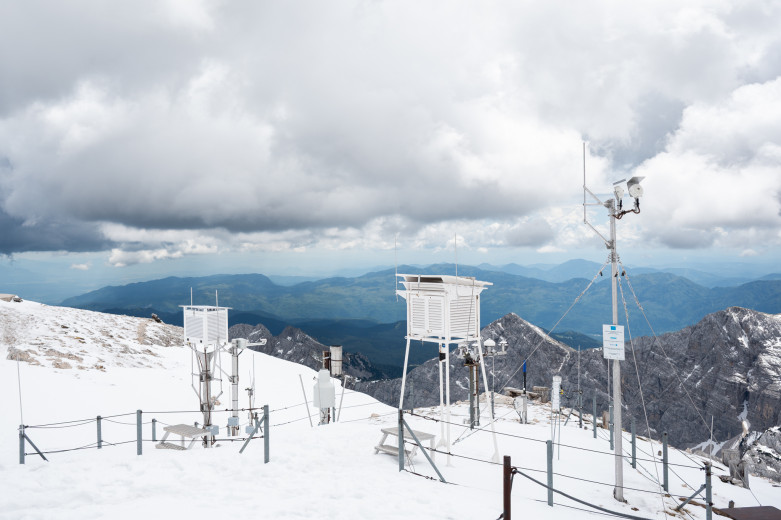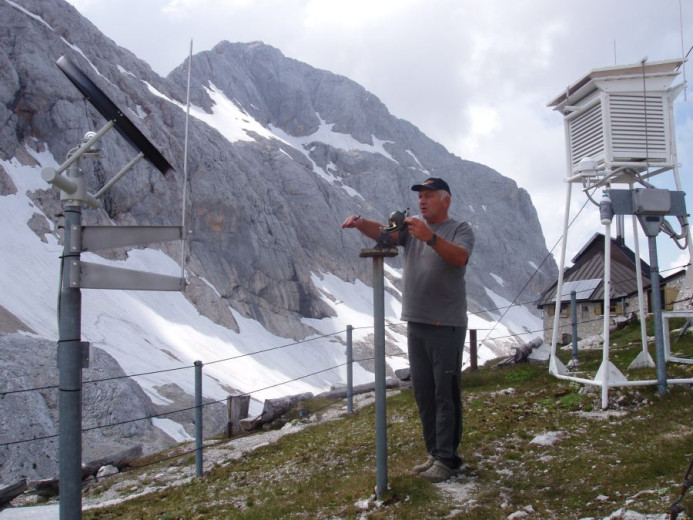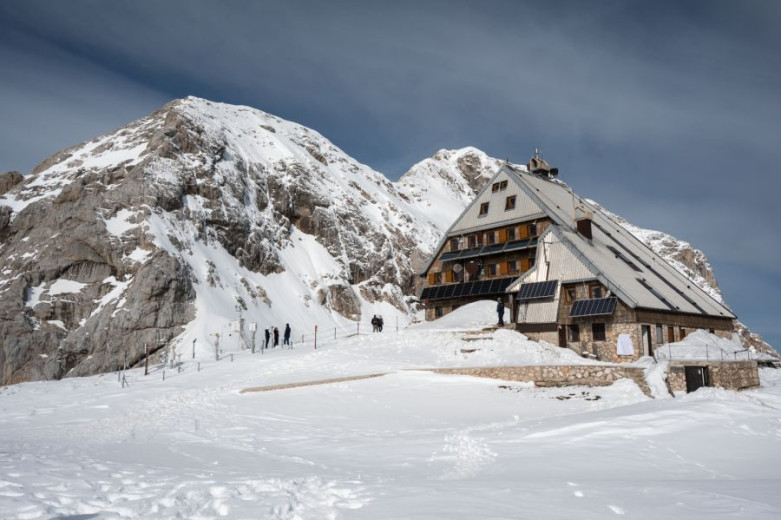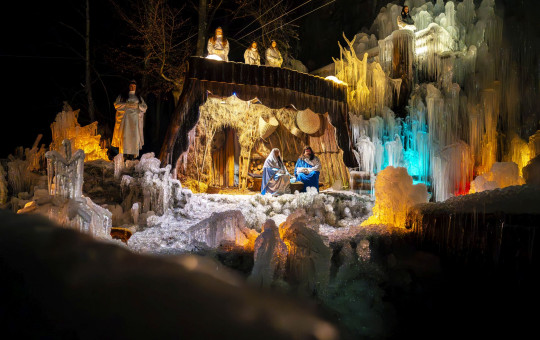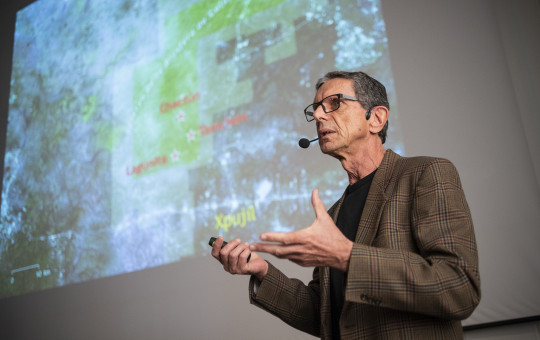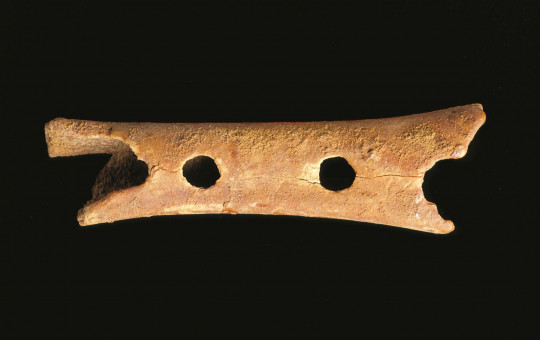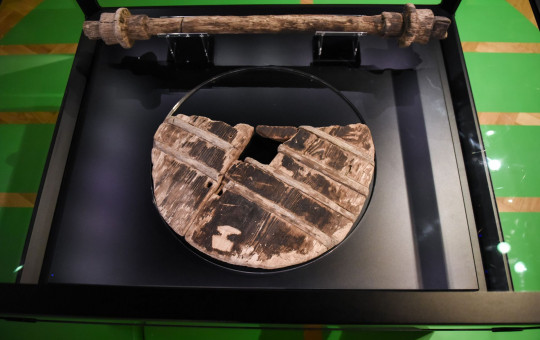Date: 5. June 2025
Time to read: 2 min
Can you imagine being flown to work by helicopter? And having your office at 2514 metres above sea level, in the middle of the Julian Alps? Welcome to Kredarica, home to the highest and only high-altitude meteorological station in Slovenia.
Continuous measurements since 1954
The first measurements at Kredarica started in 1897, just a year after the first lodge was built. Measurements were initially recorded only in summer, by the hut keeper, when the lodge was open.
Continuous measurements have been carried out since August 1954 and are the longest series of high-mountain observations in Slovenia. Since 1991, the observations have been extended to the night, and since then they have been carried out 24 hours a day.
-
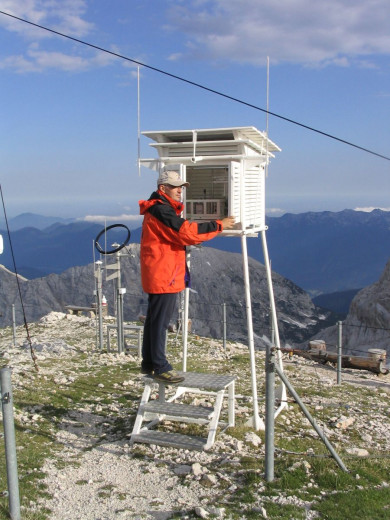 Reading the data in the observation area. Photo: Archive of Slovenian Environment Agency
Reading the data in the observation area. Photo: Archive of Slovenian Environment Agency
-
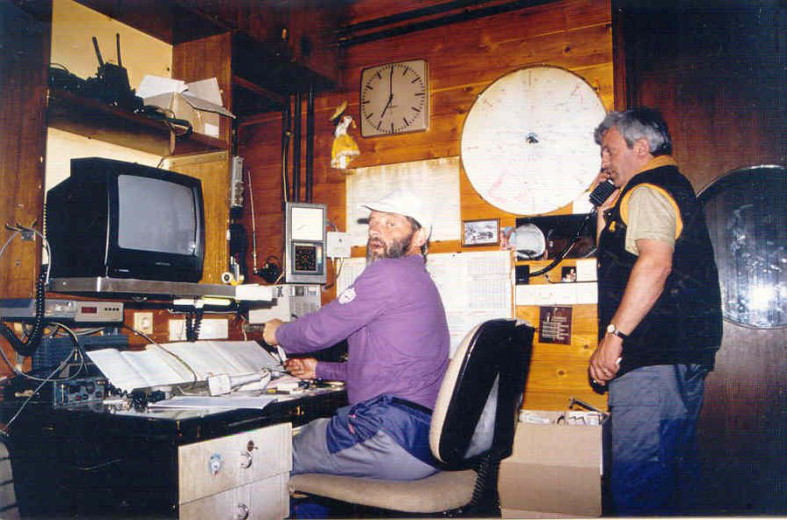 An archival image of the meteorological station at Kredarica – a glimpse into how it used to look. Photo: Archive of Slovenian Environment Agency
An archival image of the meteorological station at Kredarica – a glimpse into how it used to look. Photo: Archive of Slovenian Environment Agency
-
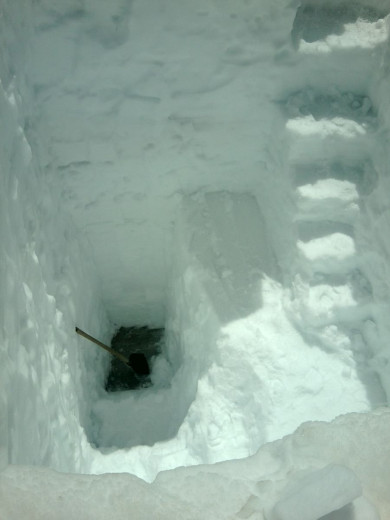 A hole 385 centimeters deep was excavated to measure the density of the snow cover. Photo: Franci Mežan
A hole 385 centimeters deep was excavated to measure the density of the snow cover. Photo: Franci Mežan
Today, the meteorological station works in cooperation with the Slovenian Environment Agency and the Slovenian Armed Forces and the two jointly monitor and report on weather conditions. Meteorological observers are present at the station every day. The team consists of a civilian and a military observer, who work in 10-day shifts at Kredarica, which are sometimes extended for weather or logistical reasons.
Although there is also an automatic meteorological station at Kredarica, observers still play a key role. As well as taking manual readings and transmitting data, they also record weather phenomena that are not detected by automatic systems, such as the type and amount of clouds.
Working in harsh and hazardous conditions
Once upon a time, observers had to walk to Kredarica. In the autumn, all the necessary equipment, food, drink and fuel were transported to the station by horses. For more than 40 years, the station has been supplied by helicopters.
-
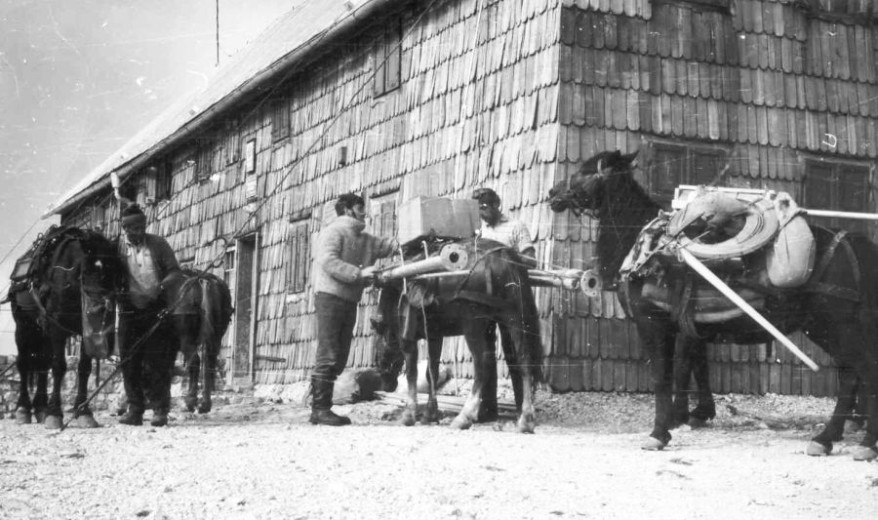 Supplying the Kredarica meteorological station with the help of horses. Photo: Archive of Slovenian Environment Agency
Supplying the Kredarica meteorological station with the help of horses. Photo: Archive of Slovenian Environment Agency
-
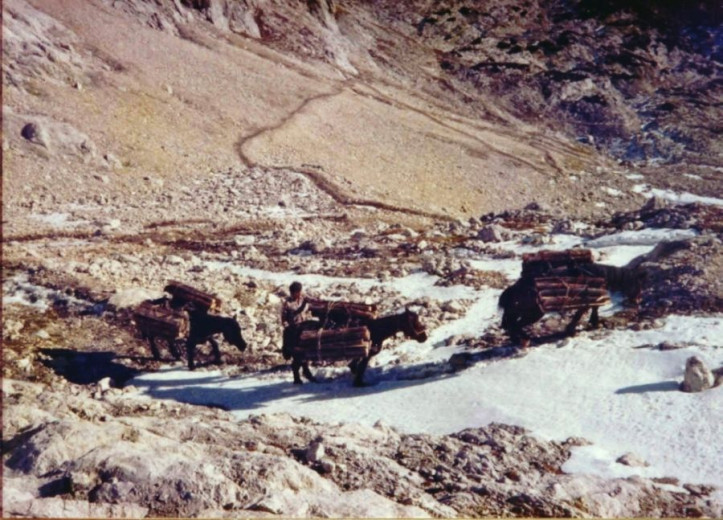 In the past, horses delivered firewood to the Kredarica station to provide heating. Photo: Archive of Slovenian Environment Agency
In the past, horses delivered firewood to the Kredarica station to provide heating. Photo: Archive of Slovenian Environment Agency
-
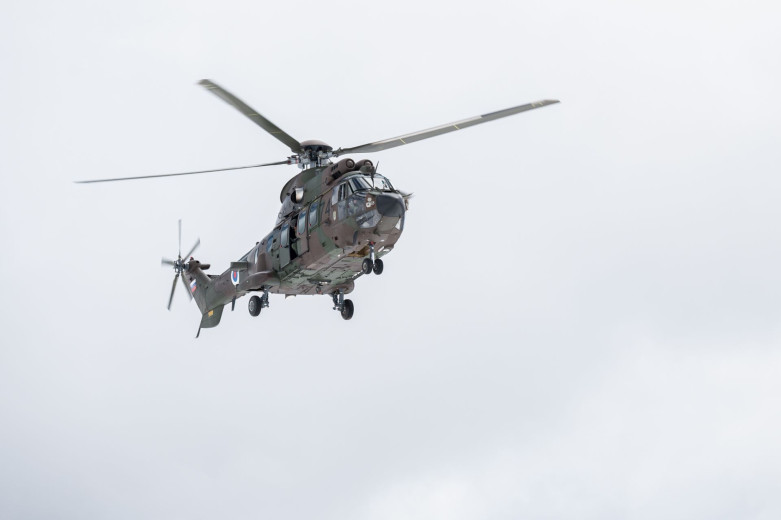 Today, the Slovenian Armed Forces take care of the station and transport observers at changes of their shift. Photo: Rok Rakun
Today, the Slovenian Armed Forces take care of the station and transport observers at changes of their shift. Photo: Rok Rakun
Dr Andrej Hočevar described how the ascent to Kredarica used to be, which was summarised by Tanja Cegnar from the Slovenian Environment Agency in the publication 60 Years of the Kredarica Meteorological Station:
He and meteorologist Bojan Paradiž went to Kredarica in the winter of 1954. They left Ljubljana on 1 December for the Krma valley. There, porters were waiting for them. In the summer, horses carried the load, but in December the snow made this impossible, so the porters carried the equipment on their backs. As there were not enough porters, they carried their personal equipment themselves. After seven hours of walking, they reached Kredarica.
Then, as well as today, work at the Kredarica meteorological station was and still is performed in harsh and dangerous conditions. The ruthlessness of the weather conditions is also evidenced by the archival record of Dr Andrej Hočevar, written on 24 December 1954 and published in the publication entitled 60 Years of the Kredarica Meteorological Station:
“Today a fierce wind has been blowing all day. Its speed exceeds 90 km/h. The wind is blowing straight towards me. I hold on to my ice axe, which I plant almost to the hilt in the snow, and slowly move on. It's no big deal if sometimes I have to squat down and hold on to it with all my might to stop it from blowing me away. One likes to measure one’s strength against the forces of nature, to see how much one can fight them.”
Winter doesn’t let go of Kredarica easily. Last year, snow remained on Kredarica until June 24. This winter, the first snowfall arrived as early as September 13, 2024, bringing 15 centimeters of snow. A continuous snow cover has been recorded since November 20, 2024. By June 6, Kredarica had seen 221 consecutive days with snow. The deepest snow cover this winter was measured on March 30, 2025, reaching 320 centimeters.
A valuable source of data for climate change research
High-altitude observatories are rare, but all the more valuable for that. They provide important insights into the state of the atmosphere and climate in high mountains and in environment not directly affected by human activities. Due to pronounced climate change, high-altitude meteorological stations have become indispensable in recent decades.
The observation area is located about 15 m south of the Triglav Lodge and has been in the same place for more than 70 years. As the surroundings have not changed significantly over the years, these measurements form a single set without artificial influences, providing a unique insight into climate change in vulnerable mountains.
The measurements are also of the utmost importance in identifying the causes of the shrinking of the Triglav Glacier. The Triglav Glacier is one of the most direct indicators of climate change in the wider Alpine region.
Modernisation of the Climate Observatory at Kredarica
After more than 70 years, the renovation and upgrading of the Climate Observatory at Kredarica started this year to provide meteorological observers with suitable working and living conditions. The renovation will allow measurements to continue and the existing instruments will be upgraded with sensors to measure the content of the two most important greenhouse gases, carbon dioxide and methane.
-
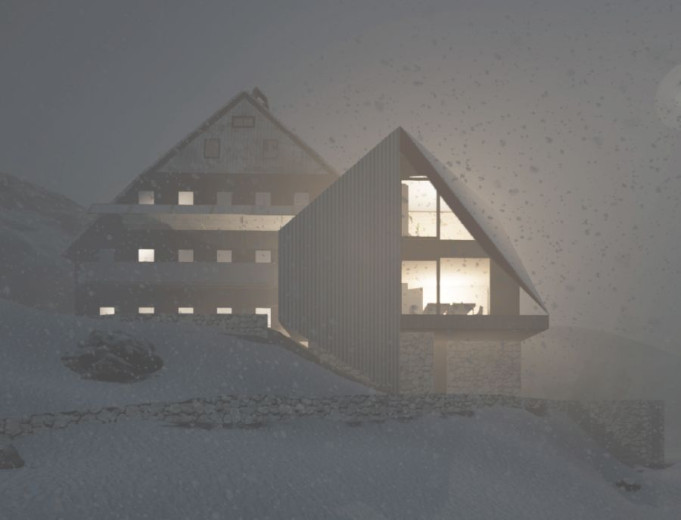 Climate Observatory after renovation. Photo: Ofis arhitekti
Climate Observatory after renovation. Photo: Ofis arhitekti
-
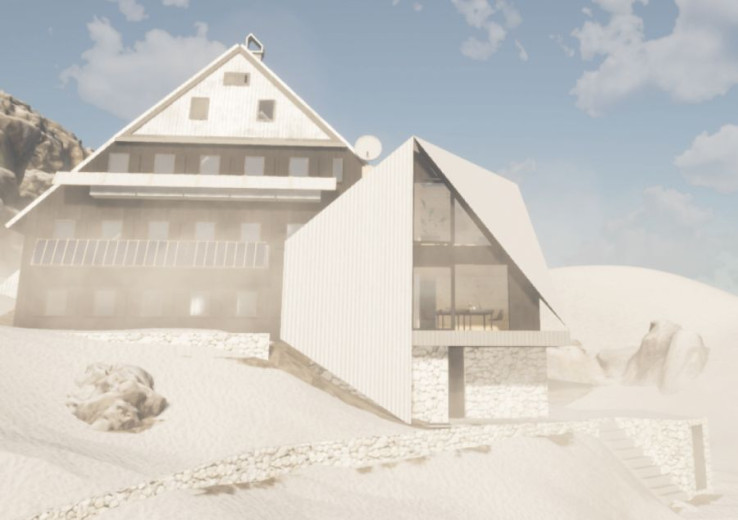 The data collected at Kredarica is crucial for accurate weather forecasts and effective climate change adaptation measures, while at the same time allowing the effectiveness of climate change mitigation measures to be monitored. Photo: Ofis arhitekti
The data collected at Kredarica is crucial for accurate weather forecasts and effective climate change adaptation measures, while at the same time allowing the effectiveness of climate change mitigation measures to be monitored. Photo: Ofis arhitekti
As the Slovenian Environment Agency explains, greenhouse gas measurements must be carried out far from large emission sources, in a well-mixed atmosphere. High-altitude observatories are therefore best suited for such measurements, as such sites are better able to show any relevant changes or long-term trends in greenhouse gas content.

